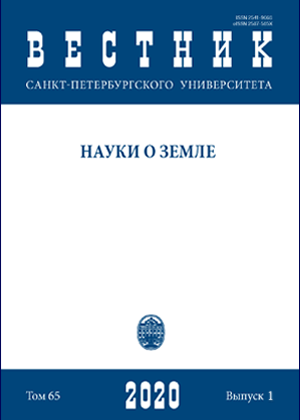Evaluation of recreational disturbance and the regulation of loads on natural protected areas in Saint-Petersburg
DOI:
https://doi.org/10.21638/spbu07.2020.102Abstract
The article analyzes the possibility of using landscape-dynamic maps to assess the recreational disturbance of the territory and the distribution of recreational loads. The connections of recreational disturbance with recreational loads in different types of natural complexes are shown. A step-by-step description of the authors’ methodology of mapping recreational disturbance on a landscape-dynamic basis is given. The results of ten-year studies of recreational loads and recreational disturbance of natural complexes at the test area within the natural protected area Lake Shchuchye (St. Petersburg) are analyzed. The relationship of the distribution of recreants with the landscape structure of the territory is shown, namely with the features of landscape sites and long-term states of landscapes. With the help of a number of indicators, the degree of disturbance of natural territorial complexes is estimated, and the change of recreational loads within the test area for 10 years is considered. With the help of landscape-dynamic maps, we demonstrate the processes of restoring the ground vegetation and reducing the total recreational disturbance — which appeared in the first years after the introduction of the protected area regime — in most of the territory. Mapping recreational disturbance on a landscape-dynamic basis made it possible to identify problem areas of the territory where the regeneration processes are slowed down or the degradation of natural complexes will continue. It is in these areas that priority management decisions should be taken to reduce recreational loads and regulate recreational flows.
Keywords:
landscape-dynamical approach, natural territorial complex, recreation loads, recreation disturbance, natural protected area
Downloads
References
Downloads
Published
How to Cite
Issue
Section
License
Articles of "Vestnik of Saint Petersburg University. Earth Sciences" are open access distributed under the terms of the License Agreement with Saint Petersburg State University, which permits to the authors unrestricted distribution and self-archiving free of charge.






